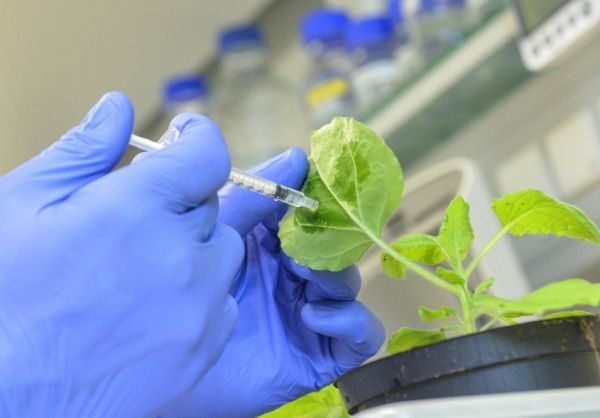Simple, fast and flexible: It could become significantly easier to vaccinate plants against viruses in future. Scientists at Martin Luther University Halle-Wittenberg (MLU), the Leibniz Institute of Plant Biochemistry (IPB) and the National Research Council in Italy (CNR) have developed a new method for this purpose. It enables the rapid identification and production of precisely tailored substances that combat different pathogens. The researchers discuss their work in the journal "Nucleic Acids Research".
The new method is based on a molecular defence program of plants that is triggered, for example, by viral infections. During a virus attack, the plant’s cells serve as a host to multiply the virus, which results in the creation of viral ribonucleic acid molecules (RNAs). Plants can detect and cut up these molecules using special enzyme scissors. This process produces "small interfering RNAs" (siRNAs) which spread throughout the plant and may initiate a second stage of defence for the plant. Here, the siRNA molecules attach themselves to so-called Argonaute protein complexes and lead these to the virus RNAs, which then, in the best-case scenario can be dismantled and broken down into harmless compounds. "By implementing this two-stage process, the plant is trying to protect itself from the virus both at the site of the infection and throughout its structure", says Professor Sven-Erik Behrens from MLU’s Institute of Biochemistry and Biotechnology.
The process is not particularly efficient, however, as the biochemist explains: "When a viral infection occurs, lots of different siRNA molecules are produced, but very few of them have a protective effect. The majority simply saturate the Argonaute complexes, rendering them inactive." Behrens’ team has discovered a novel way to identify the few effective antiviral siRNA molecules for different viruses and harness them as plant vaccines. The scientists have developed a screening process based on plant cell extracts, which is being used instead of lengthy, complex breeding efforts. To qualify as potential vaccines, the siRNA molecules must have two key properties: On the one hand, they have to bind strongly to the Argonaute complexes. On the other hand, they have to lead these proteins to sites of the viral RNAs that are accessible for Argonaute-mediated degradation.
Read more at Martin-Luther-Universität Halle-Wittenberg
Image: Using the novel approach by MLU's scientists, plants can be easily vaccinated. (Credit: MLU / Markus Scholz)


